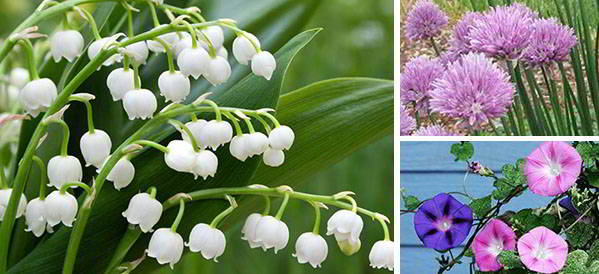
10 Beautiful Plants That Are Secretly Killing Your Garden
We have all seen co-workers with unruly offices where books and papers seemingly sprout from the walls. But no matter how high the piles grow the work keeps getting done and the occupants buried under the stacks thrive.
Not so with our gardens. Our backyard jungles can look great and appear flourishing but all is not well in the unkempt beds. Aggressively growing plants compete voraciously for space and steal nutrients from suffering neighbors. This becomes especially problematic when you are trying to cultivate vegetable gardens or berry patches and experiencing under-performing yields.
Let’s take a look at some of these garden killers with a smiling faces, pretty plants that should be introduced into your yard environment at your peril…
1. English Ivy
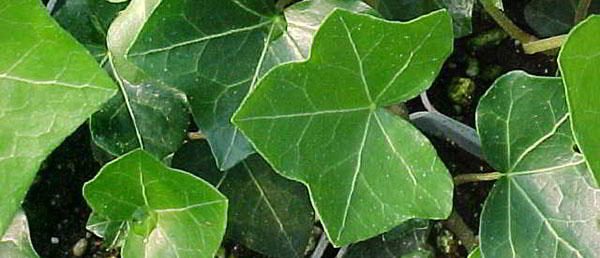
This plant enjoys a sterling reputation, especially around highfalutin college campuses in the northeast United States and the hearts of Chicago Cubs baseball fans defending the brick outfield walls of their beloved Wrigley Field. English ivy can be an appealing choice for homeowners seeking ground cover in shady areas.
At first, these vines with their eye-catching variegated leaf patterns will seem like a benign addition to your landscape. Not much early growth and demanding no care at all. But after two years of being a good garden citizen – watch out. These nimble climbers will take hold of anything and everything they can get their greedy little roots on as they race to lengths of over 10 meters (33 feet). Keep your pruning shears sharp and your knee pads primed to control these invaders.
2. Morning Glory
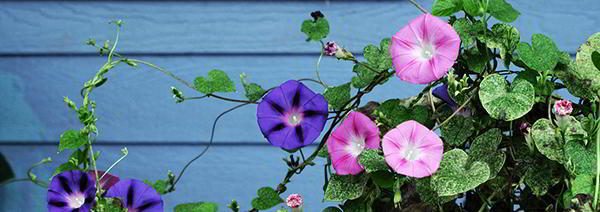
Even the name evokes joy. Poems and songs have been written about this beguiling plant. And with its heart-shaped leaves and large funnel-like flowers in shades of blue and purple and yellow and red, it is easy to see why. But gardener beware. Once these beauties become established they take no prisoners. This rapid-response vine is even treated as a noxious weed in some locales.
You may think that because most morning glories are classified as annuals their potential for harm can be corralled. But even in colder zones, these plants have been known to rear their pretty heads each spring and to re-seed themselves during the growing season. Your best protection against a suffocating blanket of morning glories is diligent dead-heading of spent blooms and by pulling up dead vines to the root after the first frost.
3. Trumpet Vine
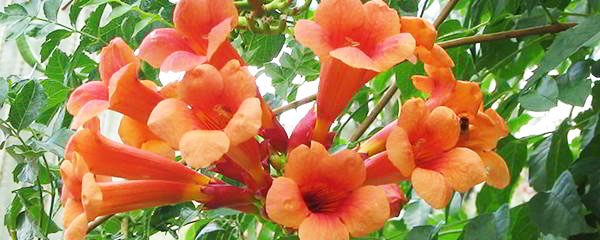
Unlike its flowering vine cousin, the morning glory, the trumpet vine does not launch stealth attacks on your garden via unexpected reappearances from season to season. This garden warrior makes no secret of its intentions for domination over your yard. The perennial trumpet vine is valued for its profusion of reddish-orange blooms and the hummingbirds that find them irresistible. Even the seedpods of the trumpet vine are cool to look at.
But if Mae West was wrong and too much of a good thing is not wonderful the splendors of the trumpet vine will soon wear out their welcome. Growth in a single season can exceed 10 meters (33 feet). If propagated near the house this intrepid attacker can even wage war on roofing shingles and foundations. The woody vines are tough varmints to get rid of as well. If you just have to have a trumpet vine – and many do – try planting it in a five-gallon bucket with the bottom cut out and sink it in the ground. Or locate it in an open area where the spreading growth can be mowed down.
4. Wisteria
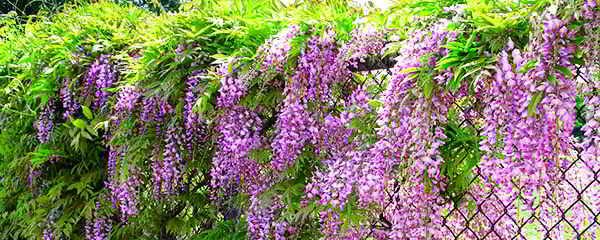 How could anything so lovely and smelling so sweet be dangerous? Well, not only will wisteria plot a relentless march on your garden but this twisting vine is strangling victims in its lavender-laced tentacles as it goes. The good news is that it does not require any fertilizing or watering or any care at all, for that matter.
How could anything so lovely and smelling so sweet be dangerous? Well, not only will wisteria plot a relentless march on your garden but this twisting vine is strangling victims in its lavender-laced tentacles as it goes. The good news is that it does not require any fertilizing or watering or any care at all, for that matter.
The only way to fight back against willful wisteria is with a rigorous campaign of heavy pruning. And not just constant snipping. You need a virtual master’s degree in proper pruning techniques to know where and at what time of year to deploy your shears. But even that may not counter the insurgency of the root system. But wisteria is soooo lovely.
5. Lily of the Valley
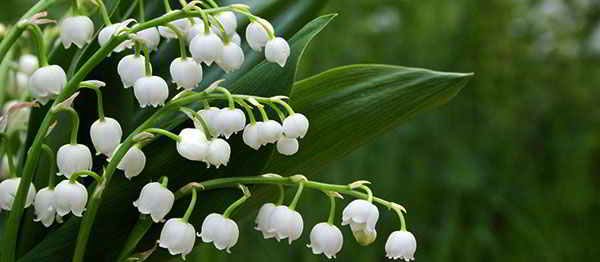 With its fragrant little white bells for flowers, the lily of the valley seems an unlikely candidate to be lumped in with the garish creeping vines above. But its troops are massing underground on rhizomes itching to spread out and claim territory. The secret weapon of this spreading mass is adaptability, performing equally well in light or shade, moist soil or parched.
With its fragrant little white bells for flowers, the lily of the valley seems an unlikely candidate to be lumped in with the garish creeping vines above. But its troops are massing underground on rhizomes itching to spread out and claim territory. The secret weapon of this spreading mass is adaptability, performing equally well in light or shade, moist soil or parched.
6. Gooseneck loosestrife
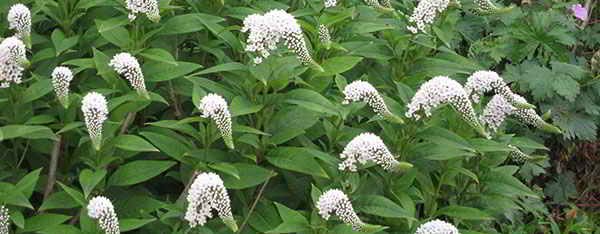 Many garden killers are welcomed into the yard under the guise of ground cover. Fill in a bare spot here, take over a spot where nothing else grows over there. The problem is that once the job is performed these plants are often not easily convinced to stay cooped up in their intended territory. Gooseneck loosestrife is one such plant that can go above and beyond the call of duty.
Many garden killers are welcomed into the yard under the guise of ground cover. Fill in a bare spot here, take over a spot where nothing else grows over there. The problem is that once the job is performed these plants are often not easily convinced to stay cooped up in their intended territory. Gooseneck loosestrife is one such plant that can go above and beyond the call of duty.
The low-growing perennial comes in purple, pink, white, and yellow blooms that arch gently on the end of a spike. It is a tolerant soul that will respond in any soil conditions save complete dryness. And in ideal conditions gooseneck loosestrife will become extremely aggressive. Even concrete is susceptible to colonization. Before planting this rambunctious little guy it is best to check in with your local experts to see if it will have eyes on overtaking your garden.
7. Mint
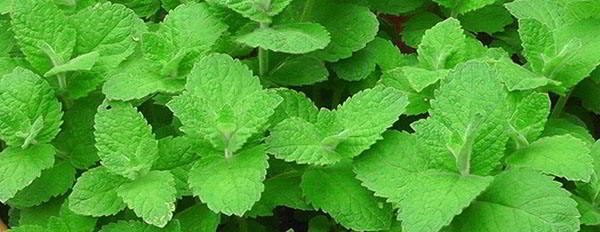 Everyone loves a productive herb garden and no conscientious tender of plants enjoys the role of executioner. With that in mind, think twice about planting mint in your garden. There are many kinds of mint plants that will flavor dishes and do excellent duty as garnishes but all have one thing in common – they are voracious inhabitants of their environment.
Everyone loves a productive herb garden and no conscientious tender of plants enjoys the role of executioner. With that in mind, think twice about planting mint in your garden. There are many kinds of mint plants that will flavor dishes and do excellent duty as garnishes but all have one thing in common – they are voracious inhabitants of their environment.
Mint plants will overwhelm an herb garden without remorse. In response, many home gardeners grow mint only in containers. If planted in a garden the only way to make this randy herb play nice with others is to sink them in the soil while still surrounded on the sides by those containers. Even that may not be enough to prevent this aromatic little fighter from bullying more timid garden neighbors. Mint can become so invasive that even the most organic of gardeners are forced to turn to chemicals to enact damage control.
8. Chives
 Chives are another herb that is not content to grow meekly within the confines of a garden. Like many soldiers in the war on your yard chives require very little in the way of field rations – chives may be the easiest of all herbs to grow. They spread out above ground via seeds and below the surface with tiny bulbs. While beginning life in your well-tended garden beds these conspirators are likely looking with longing at the wide-open spaces afforded by your nice green lawn.
Chives are another herb that is not content to grow meekly within the confines of a garden. Like many soldiers in the war on your yard chives require very little in the way of field rations – chives may be the easiest of all herbs to grow. They spread out above ground via seeds and below the surface with tiny bulbs. While beginning life in your well-tended garden beds these conspirators are likely looking with longing at the wide-open spaces afforded by your nice green lawn.
If chives spread into the lawn the infiltration is not an easy one to defend. Pulling the small plants out of the grass often breaks the stem from the bulb which leads to even more spreading. Chemicals often cannot cling to the plant because of its waxy coating and are ineffective. Digging up the bulbs is the only sure way to eradicate the plant but even the skinniest of trowels is likely to bring up good grass. So enjoy your chives. Those little purple flowers look good – and are edible too – and they sure help spruce up a bland baked potato.
9. False Lamium
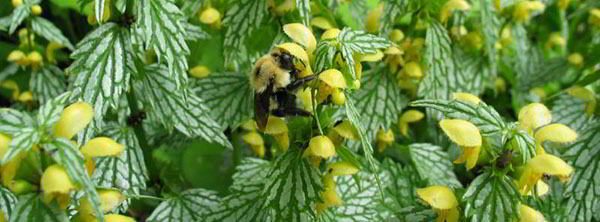 Already this plant sounds like a bad actor. What is it hiding and what did it do with the real lamium? But its foliage is streaked with thick veins of silver and its flowers burst out in bright yellow and so who can resist inviting it into the garden. And it will accommodate even dry shade conditions.
Already this plant sounds like a bad actor. What is it hiding and what did it do with the real lamium? But its foliage is streaked with thick veins of silver and its flowers burst out in bright yellow and so who can resist inviting it into the garden. And it will accommodate even dry shade conditions.
But while you are entranced with those pretty leaves the false Lamium is shooting out runners willy nilly that are eager to root and threaten to squeeze the life out of your garden. And those tiny yellow flowers are spitting out even tinier black seeds that will further strengthen the position of this garden denizen. No wonder its alternate name is Herman’s Pride – this character can take over a garden.
10. Yarrow
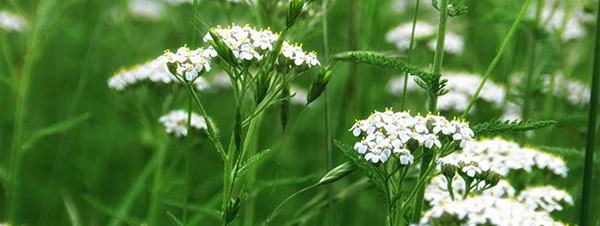 Yarrow could be the poster plant for the debate between good and evil in the garden. There are those who cherish the plant for its ease of care and the resulting cluster of flowers on stalks that last for the entire growing season.
Yarrow could be the poster plant for the debate between good and evil in the garden. There are those who cherish the plant for its ease of care and the resulting cluster of flowers on stalks that last for the entire growing season.
And there are others who feel that calling the plant “yarrow” deprives the demon of its full name – “yarrow weed.” Planting a yarrow in a garden is the beginning of a long relationship. The hardy plant thrives in just about any soil and those flower stalks harbor thousands of seeds waiting to be carried off by insects, birds, or a modest gust of wind. And when deposited elsewhere in your garden or on your lawn those seeds will remain viable for roughly nine years in the ground.
And if you decide the yarrow is no longer a friend but a foe, breaking up is very hard to do. Yarrow grows via rhizomes and if even a small piece remains in the digging process it too will become a new plant. In frustration, in the battle against yarrow, many gardeners turn to chemicals but these must be applied repeatedly during the growing season and even if successful it is likely to be little more than a Pyrrhic victory in the ongoing war in your garden.
You may also like:
10 Plants That You Should Never Plant Together (Video)
Potassium Permanganate: Why You Need It in Your Survival Kit?
The Best Flowers to Attract Beneficial Insects to Your Garden


Ah, morning glories… Dwarf morning glories are so “cute”! But- their roots go down TWENTY FEET! Once established, they’re nigh to impossible to eradicate. This is where one must hold one’s nose & get some herbicide, while saying many prayers, and be sure to break off the seed pods. This is in WA state.
The way I’ve rid my pesky but beautiful Morning Glories is pouring a solution of Dish Soap, Salt & Vinegar on them after I’ve pulled as many as possible. Keeps seeds from growing
I think you are speaking about ‘Bind Weed’. It’s so nasty and if you rototill it then like star fish it multiplies.
oh but you left out PRIMROSE…i planted a few and now I can’t get rid of the runners no matter how many I pull. I’d rather have mint & chives !
And walnut trees are guaranteed to kill off your desired plants, even if you think the tree is far enough away.
Nice and helpful article👍
I had few of that plans and l strangle to keep it down 😱
[…] The Ailanthus, or Tree of Heaven, is a deciduous tree native to China. It was first imported to Europe and the United States in the late 18th century. At one point it was a popular tree to plant in cities because of the tree’s ability to grow rapidly in disturbed areas where other plants and trees are unlikely to grow. It is now found throughout the United States and is considered an invasive species. […]